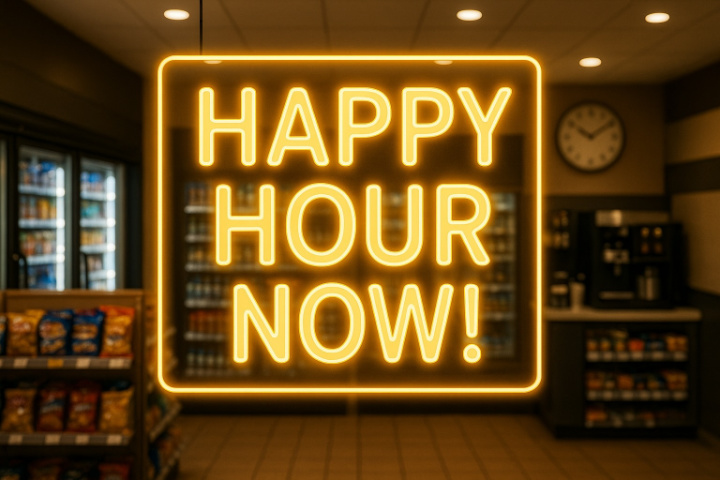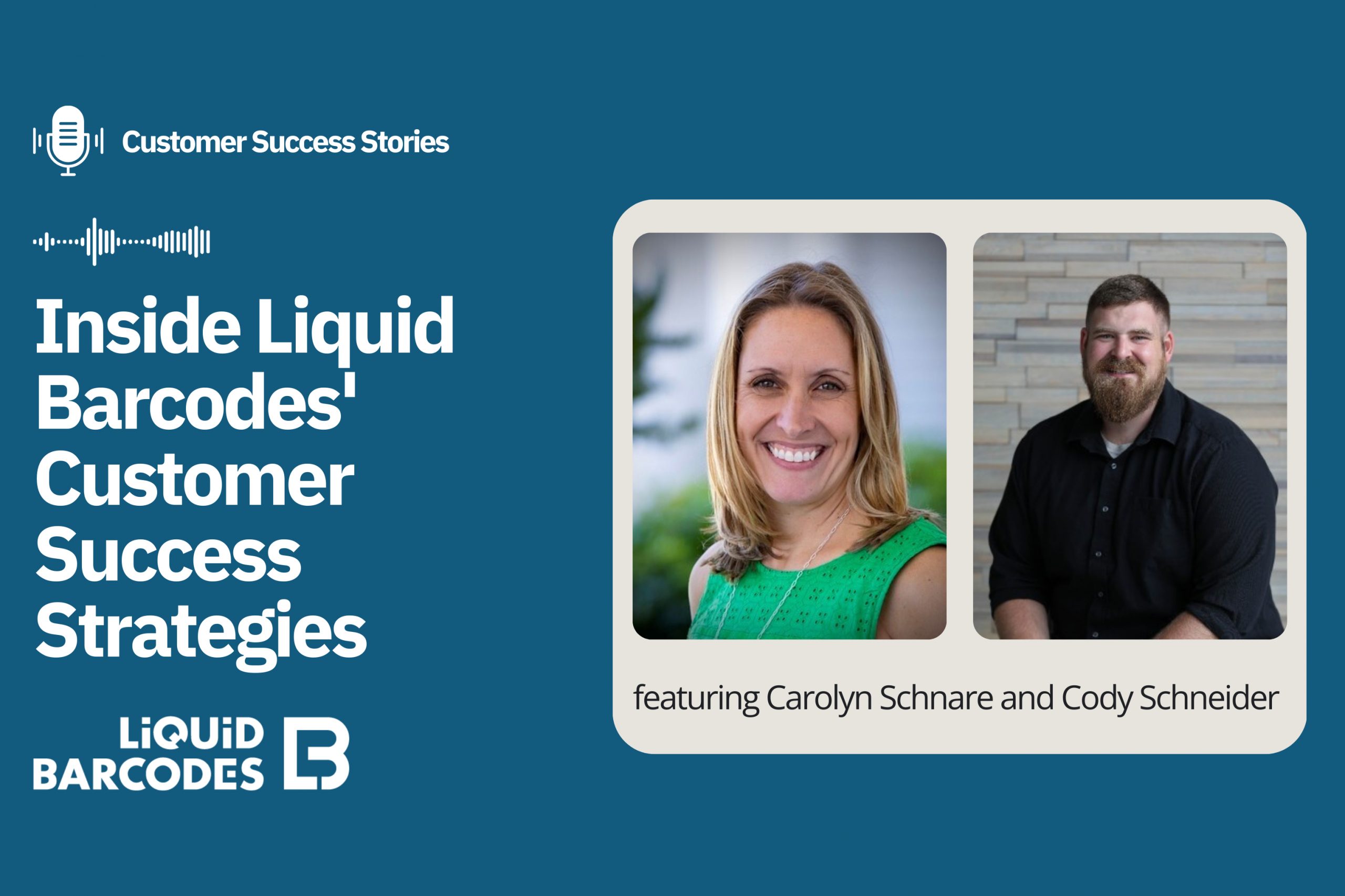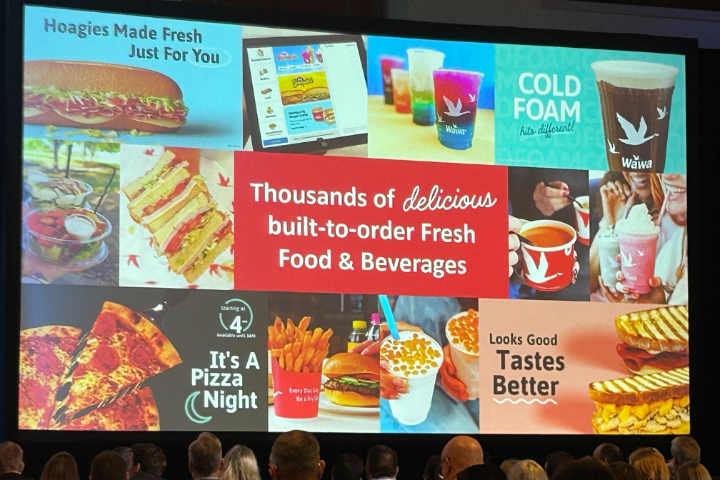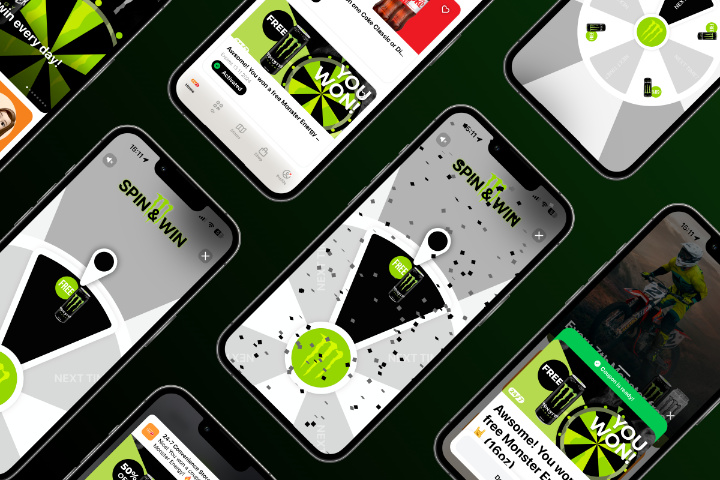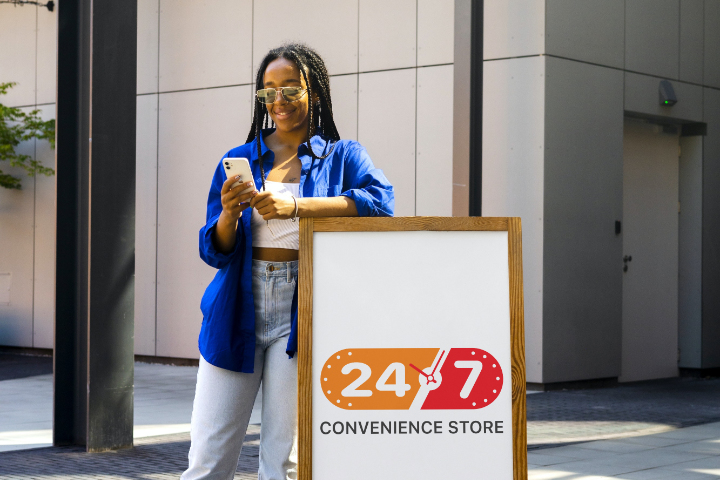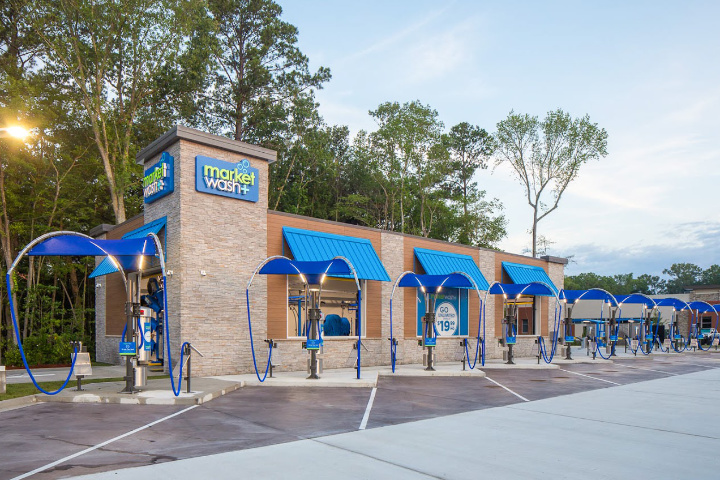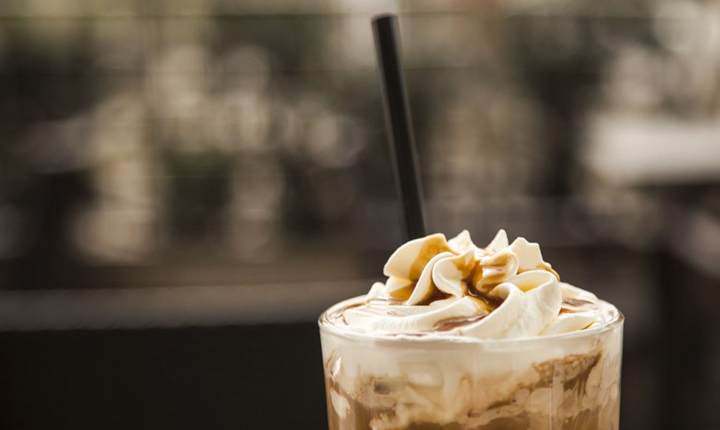Examining 7-Eleven and Narvesen data proves that gamified loyalty drives program engagement and growth and increases revenue.
Gamified loyalty has become a powerful tool for convenience retailers looking to create loyalty experiences that are fun and effective.
Liquid Barcodes is deeply committed to investing in gamification as we experience this to be a key part of driving engagement in the loyalty programs we power for convenience retailers. This commitment isn’t about simply creating games for the sake of it—it’s because we’ve seen firsthand that gamification delivers real results.
In this article, we’ll demonstrate how gamification not only drives a remarkable increase in user engagement and attention but also creates a substantial impact where it matters most: boosting in-store redemptions, recruiting new members, and reactivating lapsed ones.
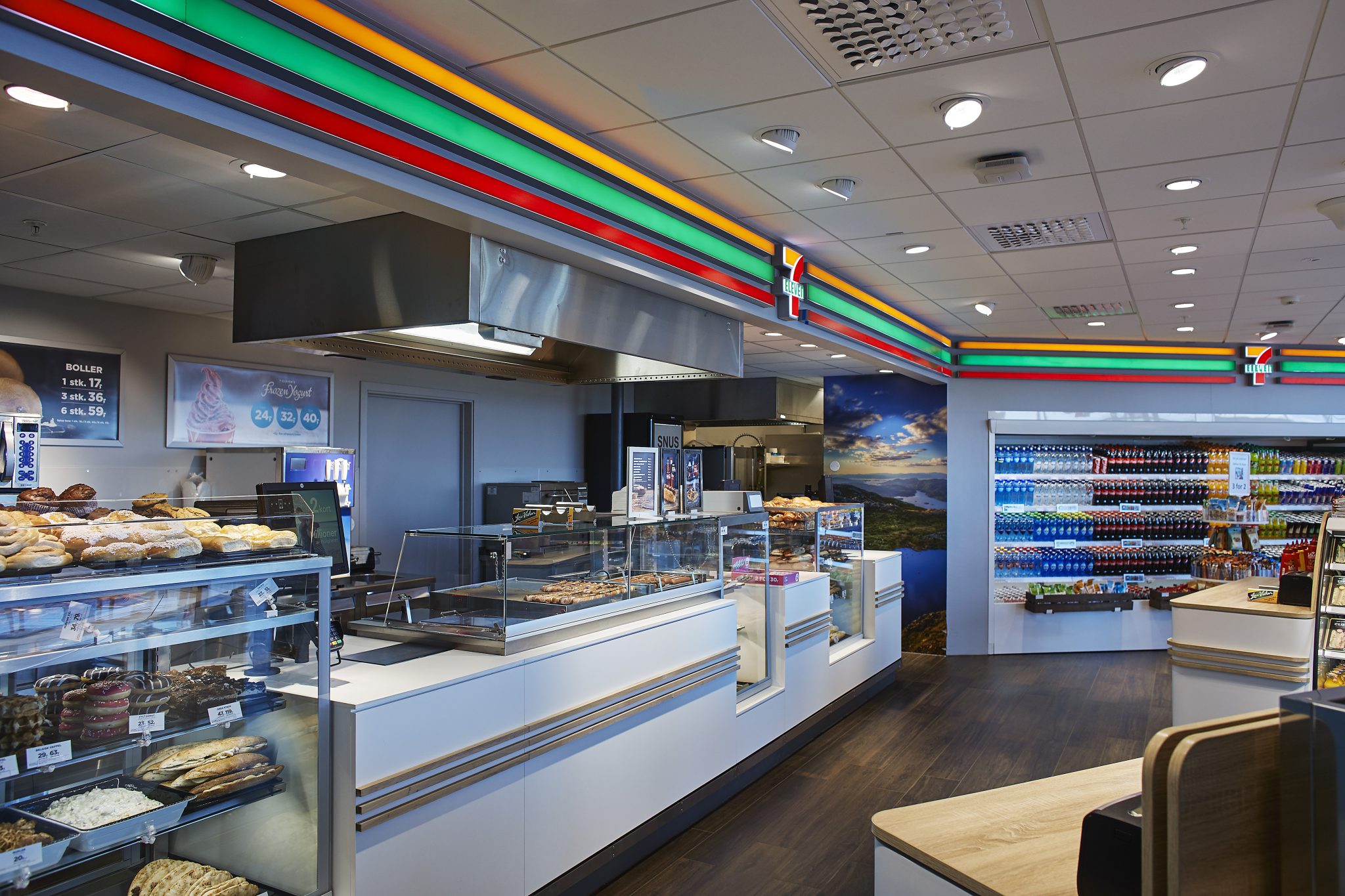
Gamified Loyalty Boosts Business Metrics
Beyond the excitement of gaming, the impact of gamification on key business metrics is what makes these games valuable to retailers. To validate our conjecture that gamified loyalty increases consumer engagement, we decided to dig into our customer’s data.
We analyzed holiday-related campaign results from two leading Nordic convenience retailers, both long-time Liquid Barcodes customers: Narvesen Norway and 7-Eleven Norway. Both retailers have robust, well-established loyalty mobile apps, with large member bases.
To avoid bias from seasonal patterns we made sure to look at the same calendar period each year for both chains. This allowed us to compare results from the same retailer, in the same calendar period, across multiple years. This way we were able to isolate the effect of running daily seasonal in-app games.
We were right! Analyzing metrics for the same retailers during the same time of year, with comparable store counts and member numbers, both with and without games, confirmed our theory.
Gamification Increases Usage, Engagement, and Coupon Redemption
When we compared Narvesen and 7-Eleven app user data over the three years, we found a significant uptick in three categories in the two years that games were offered: app usage, active members, and offer redemption. With their permission, we present you with outstanding proof of value that gamification is a true winner!
App Usage Increases When Games are Available
Active user attention is key for messaging to have any real impact. We examined how much traffic the retailers were able to drive to their respective loyalty apps in years with daily games, versus the same period in the year without daily games.
When we compare app sessions from December 1–24 over three years, the difference is striking. In the two years with holiday games, app sessions jumped 3 to 8 times compared to the same period without games!
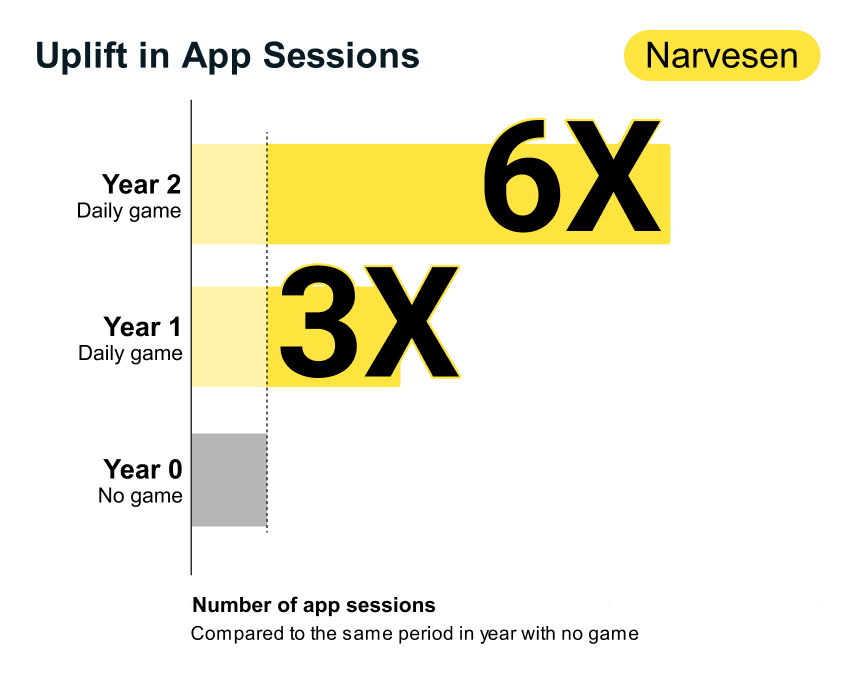
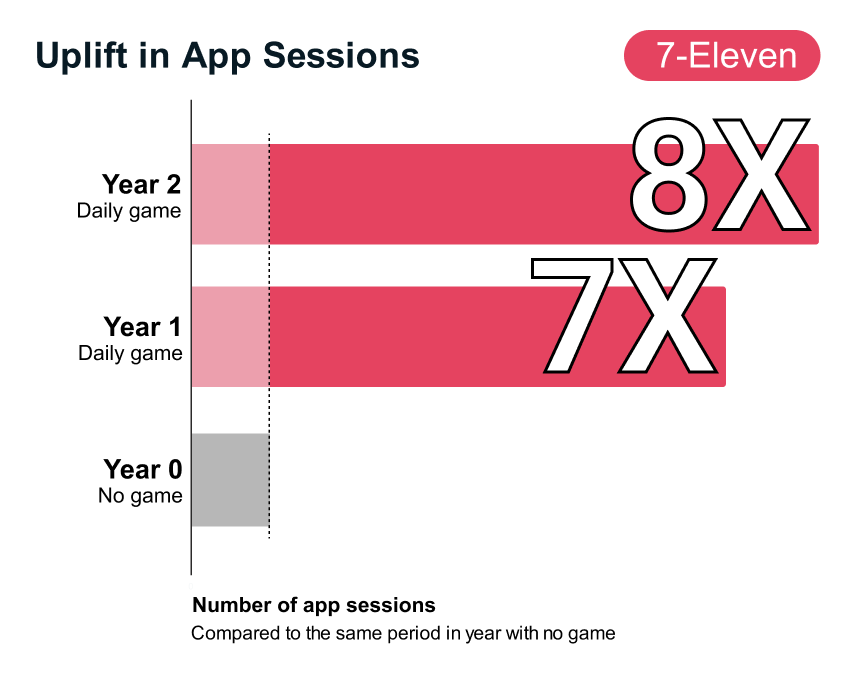
In-Store Redemptions Increase
Winners love winning and valuable prizes drive redemption. To prove this, we wanted to see if holiday games could drive traffic to the retailers’ stores, not just their apps.
To make sure we were looking at the true impact of the games, we adjusted for any changes in membership over time. By calculating redemptions per 1,000 active members, we could rule out membership growth as a factor.
The results are crystal clear! When the retailers ran holiday games, in-store redemptions—both loyalty rewards and prize coupons—jumped 25–150% compared to years without games.
This proves that holiday games don’t just grab members’ attention; they also turn that attention into real-world transactions, increasing loyalty and revenue per member. Surely, those members didn’t leave with just their free item, they probably bought complementary products, thereby increasing overall basket size, too!
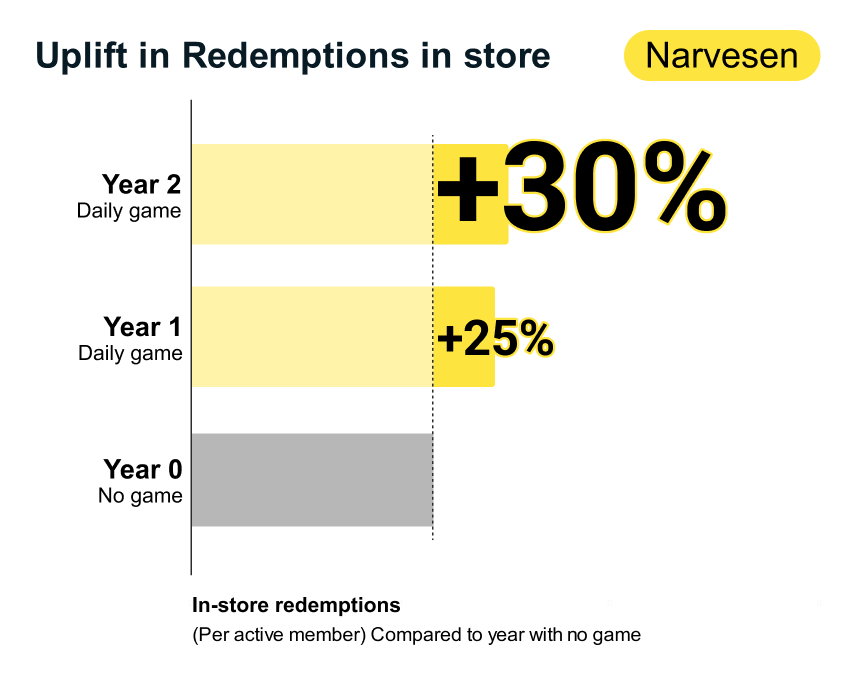
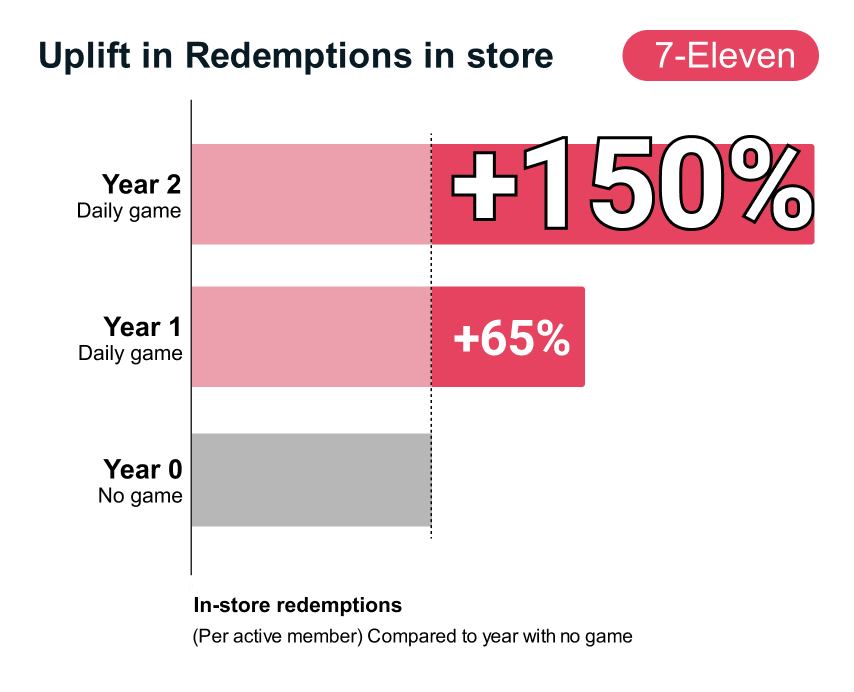
Member Recruitment and Engagement Grows With Gamification
Finally, we wanted to see if gamification could help recruit new members and re-engage inactive ones.
For all loyalty programs, we regularly track “active members,” which we define as members who’ve opened the app at least once in the last 90 days. To measure the impact of gamification, we compared the number of active members at the start of the campaign to the end and calculated the percentage of growth or decline. This figure reflects both new members joining and inactive members re-engaging.
Across both years and both retailers, gamified campaigns led to a noticeable increase in active members. This means the boost in attention and transactions isn’t just coming from already active members, it’s also driven by new recruits and reactivated users.
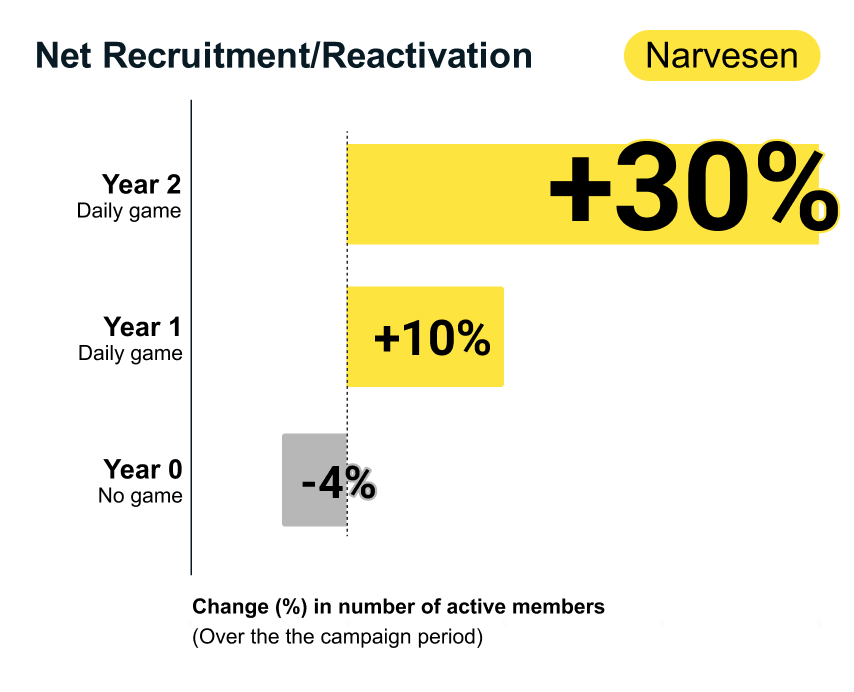
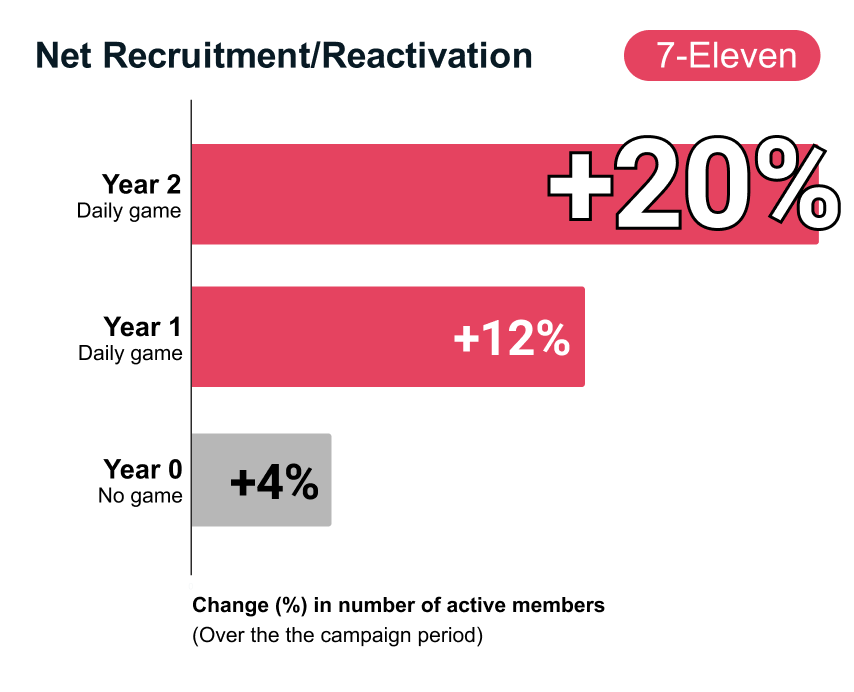
The Gamified Loyalty Advantage: Engagement with Impact
At Liquid Barcodes, we’ve taken gamification to the next level with a complete overhaul of our game platform, making delivering interactive and rewarding loyalty experiences easier than ever. Our new game platform, built with Flutter technology—the same foundation that powers our loyalty apps—brings enhanced graphics, sound, and haptic feedback to every game. This upgrade means retailers can offer their customers entertaining games and a seamless, immersive experience that boosts engagement and encourages repeat visits. Meet the next-gen Liquid Barcodes gamified loyalty platform and contact us to get started today!
About Liquid Barcodes
Liquid Barcodes is the leading loyalty platform for convenience retailers. Unlike other solutions, ours has been designed from the ground up to retain member engagement and activity. Every aspect, from the fundamental system architecture to the small details that make our loyalty apps such a joy to use, is crafted to ensure a highly personalized, gamified experience.
Our loyalty programs are so engaging and visually appealing that members remain active over time, making us better than any other solution at retaining your members’ attention. Increased attention, translates into increased impact. Ultimately, these differences will make your loyalty program a more powerful and effective tool, when you work on increasing basket size and visit frequency.
Learn more about Liquid Barcodes at liquidbarcodes.com.
About the Author
Carolyn Schnare, Chief Content Officer, Liquid Barcodes
Carolyn Schnare has been involved with the convenience retailing industry for two decades with extensive knowledge of customer engagement and marketing, sustainability, and community outreach. Before Liquid Barcodes, Schnare worked at NACS (National Association of Convenience Stores) in a variety of roles from event production to membership and most recently as Director of Strategic Initiatives and host and producer of the popular industry podcast, Convenience Matters. Schnare currently anchors the popular Future of Convenience podcast, produced by Global Convenience Store Focus media group.


